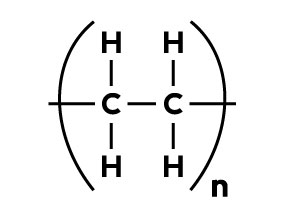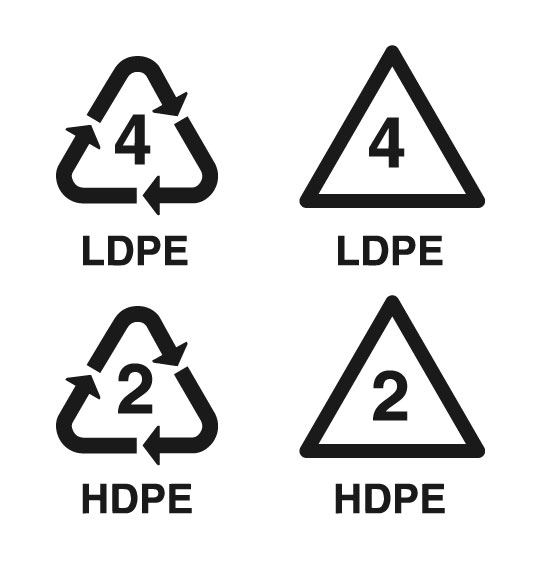
Plastic Types: Polyethylene
Polyethylene: Hula Hoops and Honey Bears
For the product of a lab accident, polyethylene has gone on to stellar success. It’s currently starring in this installment of our plastics series.
PE history
One day in 1898, German chemist Hans von Plechmann was heating up some diazomethane gas—you know, as you do—and accidentally produced a white, waxy substance. Much analysis later, this was discovered to be a polymerized version of ethylene and was thus termed polyethylene (yes, chem nerds, we know that’s the extremely abridged version).
PE was not ready for industrial production, however, until the 1930s, when a merry band of English chemists had another lab accident that eventually resulted in a reproducible process for making this flexible material.
PE shares many qualities with polypropylene. Polyethylene is a thermoplastic, meaning it can be manipulated into many shapes by heat, and it can be produced either by modifying a mixture of methane, ethane, and propane or through the treatment of crude oil. But it has a more limited range of grades that can be remelted.
The many grades of PE
There are quite a few grades available, but you’re most likely to encounter the low-, medium-, and high-density versions—LDPE, MDPE, and HDPE, respectively.
HDPE is usually used in its rigid form and has good resistance to moisture, acids, and other chemicals, but it is prone to cracking from stress and impact. It is the unsung hero of the beloved hula hoop and is a common material for garbage cans, water and chemical tanks, rain gutters, and milk jugs. HDPE is also used in film form for grocery bags, but you may have noticed that these lack the tensile strength of other types of plastic bags—usually in a parking lot, when the bag breaks and sends your items crashing to the ground.
MDPE also has good moisture and chemical resistance and is more naturally flexible than HDPE. It’s often used to make tubing and pouches for liquid products, but its limited range—not super flexible, not super dense—means it isn’t as widely used as HD and LD.
LDPE (and its variant, linear LDPE, aka LLDPE) is the ubiquitous stuff of packaging films of all types: nonfrozen food uses such as coffee canisters and prepared food packaging, as well as dry cleaning bags, thick shopping bags, grocery bags, and many more. Its chemical structure, with varying areas of dense and loosely packed molecules, is what gives LDPE its stretchy, resilient quality, making it perfect for squeeze bottles like the honey bear.
Polyethylene pluses and minuses
PE does have excellent electrical insulation properties, so it’s common in transmission lines and as wire insulation. It is also a low-cost material and allows for a good amount of reuse in manufacturing. In molded parts that require cold runners, the runners can be snapped off and reground for use in new molds. (Runners direct the liquid material to mold cavities; sometimes they’re left intact, as in toy car parts that you snap off.)
Some of PE’s qualities make it unsuitable for many commercial applications. It has a relatively low melting point and does not have great UV resistance—you’ve seen what happens to a hula hoop left outside for too long. HDPE doesn’t lend itself to bonding, so its surface is difficult to print on and its products tend to have just raised lettering. That is to say, it could affect how you package and brand your product. As always, you have to balance aesthetic design with material requirements.
Recycling PE
PE is actually easily recyclable, but its different forms require different channels, which is why many municipal services ask that you not put plastic bags in with the other recyclables. Once channeled to their respective facilities, however, rigid and film PE products can be melted, shredded, and reground, living again as garbage can liners, compost bins, and even furniture.
For more information on Polyethylene, check out these links:


Jenifer Wolfe
Consulting Editor
Jennifer Wolfe has a curious mind and a gift for words and languages—if she does say so herself. A trained metalsmith and lifelong craft nerd, she loves handmade stuff, whimsical clothes, and traveling. A resident of Mexico, she is certain that tacos are the food of the gods.


